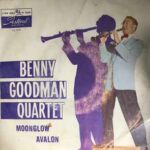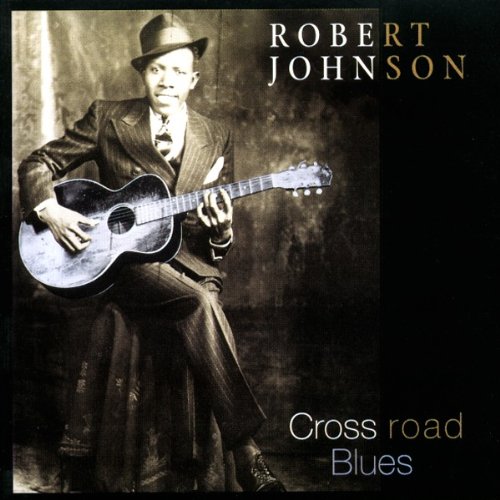 Benny Goodman, widely celebrated as the “King of Swing,” crafted an enduring legacy that defined an era of American music. Among his many recordings, “Moon Glow” stands as a shining example of his ability to blend sophisticated jazz harmonies with irresistible swing rhythms, creating a sound both elegant and emotionally resonant. Released in 1934, “Moon Glow” captures the essence of the swing era: a balance of technical mastery, emotive expression, and infectious energy that could transport listeners from smoky ballrooms to the excitement of a dance hall packed with jazz enthusiasts.
Benny Goodman, widely celebrated as the “King of Swing,” crafted an enduring legacy that defined an era of American music. Among his many recordings, “Moon Glow” stands as a shining example of his ability to blend sophisticated jazz harmonies with irresistible swing rhythms, creating a sound both elegant and emotionally resonant. Released in 1934, “Moon Glow” captures the essence of the swing era: a balance of technical mastery, emotive expression, and infectious energy that could transport listeners from smoky ballrooms to the excitement of a dance hall packed with jazz enthusiasts.
“Moon Glow” is more than a musical composition; it is a mood, a night-time reverie rendered in sound. The piece exudes romance, tranquility, and the sense of quiet wonder that the moon itself evokes. Its enduring appeal lies in the way Goodman and his orchestra harness melody, harmony, and rhythm to create an immersive listening experience. From the first delicate notes to the swinging crescendos, “Moon Glow” reflects both the artistry of Goodman’s orchestra and the sophistication of the era’s jazz sensibilities.
Benny Goodman: Architect of Swing
By the early 1930s, Benny Goodman had begun to establish himself as a clarinet virtuoso and bandleader. Unlike many of his contemporaries, Goodman combined technical precision with an uncanny ability to connect emotionally with audiences. He had a knack for transforming complex jazz harmonies into accessible, swinging arrangements that could delight both casual listeners and seasoned musicians.
“Moon Glow” exemplifies this duality. On one hand, it demonstrates the orchestra’s technical excellence, with intricate clarinet lines, tight horn arrangements, and sophisticated chord progressions. On the other, it remains deeply lyrical and approachable, conveying a sense of intimacy and romance that resonates on a personal level. This balance of virtuosity and accessibility is a hallmark of Goodman’s work and is a key reason why “Moon Glow” has endured as a classic of the swing era.
Composition and Musical Structure
“Moon Glow” is structured as a smooth, flowing ballad that gradually builds into moments of lush swing. Its harmonic language is rich yet not overwhelming, featuring extended chords and chromatic flourishes typical of 1930s jazz. The melody itself is gentle and lyrical, weaving a sense of nocturnal beauty that perfectly aligns with the title.
Goodman’s clarinet carries the primary melodic line, floating effortlessly above the orchestral accompaniment. His tone is warm and rounded, capable of both tender lyricism and brisk, articulate swing. The band’s rhythm section—piano, bass, and drums—provides a subtle yet propulsive pulse, allowing the melody to breathe while maintaining momentum. Horns and reeds enter and exit with precision, adding texture, harmony, and dynamic contrast without ever overwhelming the central melody.
One of the most remarkable aspects of “Moon Glow” is its sense of space. Unlike some jazz recordings that crowd the sonic landscape with rapid-fire improvisation, this track allows each instrument to shine individually while contributing to a cohesive whole. The result is music that feels alive, organic, and emotionally resonant—a soundscape that captures the listener’s imagination as vividly as the moonlit imagery implied by the title.
The Emotional Atmosphere
“Moon Glow” succeeds not only because of its technical execution but because of its emotional resonance. The track evokes the serenity and wonder of a moonlit night, creating a reflective, almost dreamlike atmosphere. Listeners can imagine themselves in a dimly lit ballroom, the soft glow of chandeliers reflecting off polished wood floors, couples swaying gently to the music, and the clarinet’s smooth tone weaving through the air like a silver ribbon of sound.
This mood is enhanced by the song’s dynamic control. Soft passages convey intimacy and romance, while moments of fuller orchestral texture provide emotional lift and exuberance. The careful balance between restraint and expressive flourish makes “Moon Glow” a masterclass in musical storytelling, demonstrating Goodman’s keen understanding of how to translate emotion into sound.
Innovation and Swing Era Context
The swing era was marked by innovation, as bands sought to create music that was both sophisticated and danceable. Goodman’s work, including “Moon Glow,” exemplified this pursuit. While rooted in jazz traditions, the piece also incorporates elements of popular music and dance-band sensibilities, bridging the gap between artistry and entertainment.
In the context of 1930s America, “Moon Glow” would have been played in a variety of settings: on radio broadcasts, in clubs, and at formal dance events. Its melodic clarity and rhythmic elegance made it accessible to a wide audience, while its harmonic sophistication and ensemble interplay appealed to jazz aficionados. In this way, Goodman demonstrated his ability to craft music that could satisfy multiple layers of listeners simultaneously—a hallmark of his lasting influence.
Instrumentation and Key Performers
Benny Goodman’s clarinet is, of course, the centerpiece of “Moon Glow,” but the arrangement showcases the orchestra’s ensemble talents. Brass instruments punctuate the melodic line with harmonized swells, while the reed section adds depth and complexity to the harmonic texture. The rhythm section—anchored by bass, drums, and piano—maintains a steady, flowing swing that allows the piece to glide effortlessly.
Each instrumentalist contributes to the overall narrative of the song. Solo passages are delivered with both technical skill and emotional nuance, highlighting individual artistry without disrupting the ensemble’s cohesion. The interaction between soloist and orchestra is a testament to Goodman’s leadership and his ability to balance virtuosity with ensemble unity.
Legacy and Cultural Influence
“Moon Glow” has endured as a classic not only because of its musical brilliance but also because of its cultural resonance. Benny Goodman’s work during the swing era helped define the sound of American jazz, influencing countless musicians and composers. The clarity, lyricism, and swing sensibilities present in “Moon Glow” became a template for both jazz and popular music for decades.
The track’s evocative quality has made it a favorite for reissues, compilations, and archival broadcasts celebrating the swing era. Its presence in modern media—whether as background music in films, documentaries, or jazz retrospectives—attests to its timeless appeal. Listeners are drawn to the warmth of Goodman’s tone, the elegance of the arrangement, and the mood of refined nocturnal beauty that the song evokes.
Why ‘Moon Glow’ Endures
The enduring appeal of “Moon Glow” lies in its combination of melodic beauty, emotional depth, and rhythmic elegance. Unlike some period-specific recordings that feel tied to a particular moment in history, this track possesses an almost cinematic quality that continues to resonate with listeners today.
Its clarity and balance make it accessible to newcomers while offering richness and complexity for seasoned jazz enthusiasts. The song’s lyrical instrumentation, emotive solos, and sweeping ensemble passages combine to create a listening experience that feels intimate and grand simultaneously—a rare achievement that underscores Benny Goodman’s artistry.
Moreover, the evocative title and mood of the piece ensure its timelessness. “Moon Glow” is not just a technical accomplishment; it is a musical portrait of nighttime serenity, romance, and the subtle excitement of human connection. The song’s imagery and soundscape allow it to remain fresh, captivating, and emotionally compelling nearly a century after its recording.
Influence on Later Jazz and Popular Music
“Moon Glow” and Goodman’s broader work during the swing era influenced both contemporaneous musicians and generations that followed. Jazz clarinetists, big band arrangers, and even rock and pop performers drew inspiration from Goodman’s balance of technical precision and emotional expression. The smooth interplay between melody and accompaniment in “Moon Glow” foreshadowed developments in cool jazz, smooth jazz, and even certain strands of easy listening and lounge music.
The track’s cultural imprint is also evident in its enduring presence on compilations and streaming platforms. Modern listeners, from casual jazz fans to dedicated enthusiasts, continue to discover “Moon Glow” and appreciate its refined swing sensibilities and lyrical warmth. Its influence extends beyond jazz, inspiring musicians who seek to convey elegance, narrative, and mood through instrumental performance.
Conclusion: The Eternal Glow of Jazz Mastery
Benny Goodman’s “Moon Glow” remains a shining example of the artistry, sophistication, and emotional depth that defined the swing era. Its lyrical melodies, smooth instrumental interplay, and evocative atmosphere create a musical experience that is both timeless and immediately accessible. The song’s subtle narrative, communicated entirely through instrumental voice, captures the serenity, romance, and wonder of moonlit nights.
More than eight decades after its release, “Moon Glow” continues to enchant listeners, illustrating the power of jazz to combine technical skill, emotional expression, and narrative subtlety. It stands as a testament to Benny Goodman’s mastery and the enduring magic of swing music—a musical beacon that continues to illuminate the history and beauty of American jazz.
“Moon Glow” is more than a composition; it is a nocturnal journey, a testament to artistry and emotional resonance, and a luminous highlight of Benny Goodman’s enduring legacy.


